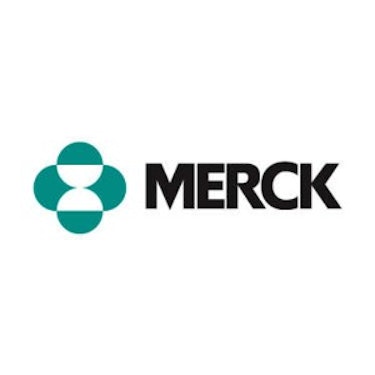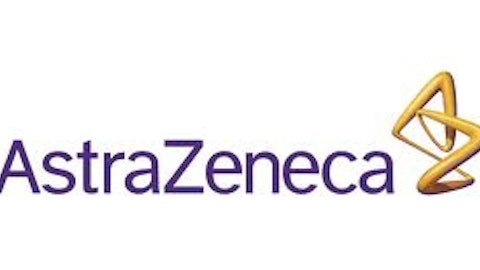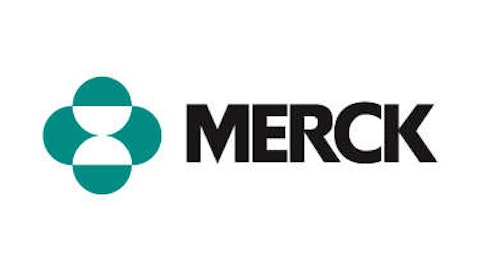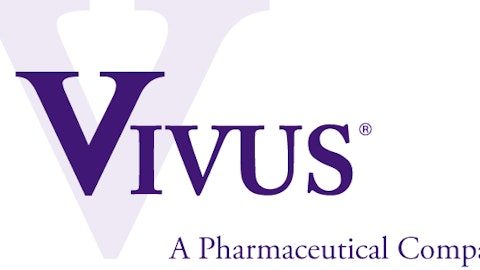
1. A beat is a beat.
The good news was that the big pharmaceutical company beat earnings estimates. Merck & Co., Inc. (NYSE:MRK) reported second-quarter non-GAAP earnings of $2.53 billion, or $0.84 per share. Analysts were expecting $0.83. A beat by a penny is still a beat. However, earnings per share for the second quarter dropped 20% compared to the same quarter last year.
On a GAAP basis, earnings were $906 million, or $0.30 per share. That’s a whopping 48% lower year-over-year.
Merck & Co., Inc. (NYSE:MRK)’s non-GAAP earnings beat didn’t come from a great top line figure. The company reported revenue of $11.01 billion, below Wall Street estimates of $11.22 billion. Revenue for the quarter also fell more than 10% from the second quarter of 2012.
2. Not enough sizzle to offset Singulair.
Merck & Co., Inc. (NYSE:MRK) chairman and CEO Kenneth Frazier was quick to point out that seven out of 10 of the company’s top products experienced sales growth during the second quarter. Actually, Merck’s figures showed that eight drugs in its top 10 increased sales year-over-year. But that growth wasn’t nearly enough to offset the lost revenue from just one product — Singulair.
Singulair’s sales have plummeted after the drug went off-patent last year. In the second quarter, the asthma drug generated revenue of $281 million compared to $1.43 billion during the same period last year. Cholesterol medication Vytorin also saw sales drop from $445 million in the second quarter of last year to $417 million in the most recent quarter.
Five of Merck & Co., Inc. (NYSE:MRK)’s top drugs grew by single-digit percentages. Top-selling Januvia experienced a year-over-year sales increase of only 1%. Remicade’s sales inched up by 2%. Sales for Zetia were up 3%. Keeping this pattern going, Merck reported a year-over-year sales increase of 4% for Isentress. Vaccines ProQuad, M-M-R II, and Varivax fared better, with sales growth of 7%.
The company’s strongest performers in terms of sales growth were Janumet, Gardasil, and Nasonex. Merck reported $474 million in sales for diabetes drug Janumet, up 16% year-over-year. Gardasil’s revenue jumped 18% to $383 million. Sales for Nasonex totaled $325 million, an 11% increase versus second quarter of 2012.
Merck didn’t get a lot of help outside of its pharmaceuticals business. Animal health revenue slipped 2% year-over-year to $851 million. Sales for consumer care products fell 11% to $490 million.
The only good news stemmed from the catch-all “other revenue,” which grew 8% year-over-year to $359 million. Merck’s partnership with AstraZeneca plc (ADR) (NYSE:AZN) originated back in 1982 and was extended for two additional years in 2012. This extension allowed Merck & Co., Inc. (NYSE:MRK) to continuing booking revenue from AstraZeneca plc (ADR) (NYSE:AZN)’s Nexium and Prilosec through 2014.
3. Pipeline outlook is murky for now.
Merck received bad news from the Food and Drug Administration for insomnia drug suvorexant. The agency turned down the New Drug Application for suvorexant, stating that safety data at higher dosage levels wasn’t satisfactory for approval.
Anesthesia drug sugammedex encountered yet another delay from the FDA recently. The agency had already delayed review by three months in March. Now, the FDA is asking for more time to take a look at results from an inspection of a clinical trial site. This development certainly adds to frustration for Merck, but I expect sugammedex will ultimately gain approval in the U.S. — just as it has done in many other countries.
The FDA did grant approval in May for Merck’s new cholesterol drug, Liptrozet. Technically, the drug really isn’t all that new. Liptrozet combines Merck’s Zetia with a generic version of Pfizer Inc. (NYSE:PFE)‘s Lipitor. With peak sales estimates of $500 million or so, Liptrozet should help Merck make up somewhat for lost Singulair revenue but much more will be needed.
Observers have had great hopes for osteoporosis drug odanacatib, which Merck licensed from Quest Diagnostics. Barclays previously projected peak annual sales of around $2 billion by 2020. However, earlier this year Merck made comments that raised concerns that odanacatib’s safety profile.
There seems to be a general murkiness surrounding Merck’s pipeline prospects right now. That being said, the company’s pipeline does have considerable potential — if Merck & Co., Inc. (NYSE:MRK) has a little better luck in the days ahead than it has had this year.
Buy, sell, or hold?
Merck looks relatively expensive compared to peers when we look at its price-to-earnings value. Its trailing P/E of almost 25 stands higher than its partner AstraZeneca plc (ADR) (NYSE:AZN), Eli Lilly & Co. (NYSE:LLY), and Pfizer Inc. (NYSE:PFE), which have multiples of 14, 12, and 11, respectively. Bristol Myers Squibb Co. (NYSE:BMY) is the only big pharma that appears more expensive than Merck, with a trailing P/E of nearly 54.
Each of these other pharmaceutical firms have their own issues, though. Bristol Myers Squibb Co. (NYSE:BMY) and Eli Lilly & Co. (NYSE:LLY), in particular, face their own revenue challenges in the days ahead from expiring patents. Pfizer Inc. (NYSE:PFE) has its continued woes from declining Lipitor sales, but it seems to be in a better position for the future than several of the other companies.
There’s nothing about Merck & Co., Inc. (NYSE:MRK) right now that screams “buy” to me. However, there also is no compelling reason to dump shares, in my view. I think holding on to Merck makes sense.
The article 3 Things You Need to Know From Merck’s Q2 Earnings originally appeared on Fool.com and is written by Keith Speights.
Fool contributor Keith Speights has no position in any stocks mentioned. The Motley Fool has no position in any of the stocks mentioned.
Copyright © 1995 – 2013 The Motley Fool, LLC. All rights reserved. The Motley Fool has a disclosure policy.



